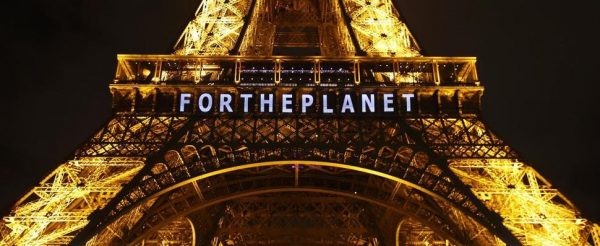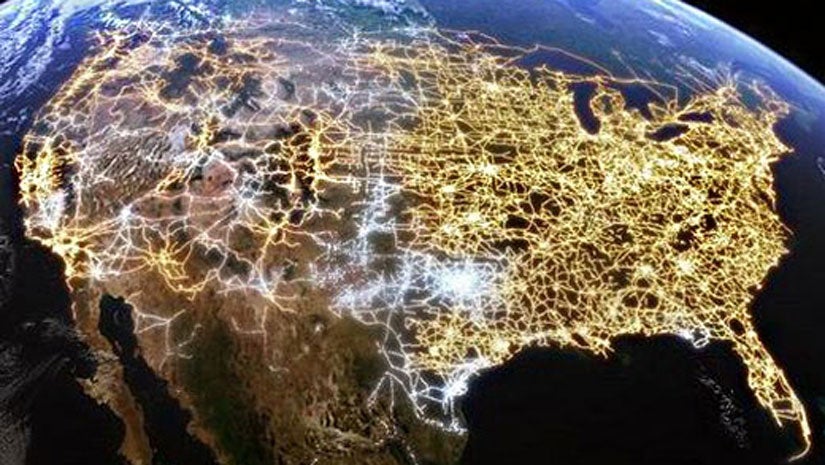2232 pages of stupid and everyone should take the time to just scan the $1.3 trillion spending bill. I got to page 184 last night and went to bed mad. There is no line item veto but there should be. President Trump can veto the whole truck load of crap and should. In place of the line item veto, he can wield his pen and sign an Executive Order eliminating countless crazy spending things or suspend some of the acts for the rest of his term. Something like the Food for Progress Act. And we are still bailing out the healthcare insurance companies…. anyway…there is also $687 million to address Russian interference. Just what is that plan?
- How about the Cloud Act? Foreign governments get access to our data? WHAT?
 2. Okay how about Trump’s “wall funding.” It’s not a wall. It’s repairs, drones and pedestrian fencing – no construction.
2. Okay how about Trump’s “wall funding.” It’s not a wall. It’s repairs, drones and pedestrian fencing – no construction. 
 3. Then we have the House Freedom Caucus with their letter to President Trump:
3. Then we have the House Freedom Caucus with their letter to President Trump: 
 So…need more? Conservative Review has these 10 items for your consideration.Here are the top 10 problems with the bill:
So…need more? Conservative Review has these 10 items for your consideration.Here are the top 10 problems with the bill:
1) Eye-popping debt: This bill codifies the $143 billion busting of the budget caps, which Congress adopted in February, for the remainder of this fiscal year. This is on top of the fact that government spending already increased $130 billion last year over the final year of Obama’s tenure. Although the Trump administration already agreed to this deal in February, the OMB put out a memo suggesting that Congress appropriate only $10 billion of the extra $63 billion in non-defense discretionary spending. Now it’s up to Trump to follow through with a veto threat. It’s not just about 2018. This bill paves the road to permanently bust the budget caps forever, which will lead to trillions more in spending and cause interest payments on the debt to surge past the cost of the military or even Medicaid in just eight years.
Keep in mind that all the additional spending will be stuffed into just six months remaining to the fiscal year, not a 12-month period. A number of onerous bureaucracies will get cash booster shots instead of the cuts President Trump wanted.
Remember when Mick Mulvaney said the fiscal year 2017 budget betrayal was needed so that he could do great things with the fiscal year 2018 budget? Good times.
2) Bait and switch on the wall: Since this bill increases spending for everything, one would think that at least the president would get the $15 billion or so needed for the wall. No. The bill includes only $641 million for 33 miles of new border fencing but prohibits that funding for being used for concrete barriers. My understanding is that President Trump already has enough money to begin construction for roughly that much of the fence, and pursuant to the Secure Fence Act, he can construct any barrier made from any This actually weakens current law.
3) Funds sanctuary cities: When cities and states downright violate federal law and harbor illegal aliens, Congress’ silence in responding to it is deafening. Cutting off block grants to states as leverage against this dangerous crisis wasn’t even under discussion, even as many other extraneous and random liberal priorities were seriously considered.
4) Doesn’t fund interior enforcement: Along with clamping down on sanctuary cities, interior enforcement at this point is likely more important than a border wall. After Obama’s tenure left us with a criminal alien and drug crisis, there is an emergency to ramp up interior enforcement. Trump requested more ICE agents and detention facilities, but that call was ignored in this bill. Trump said that the midterms must focus on Democrats’ dangerous immigration policies. Well, this bill he is supporting ensures that they will get off scot-free.
5) Doesn’t defund court decisions: Some might suggest that this bill was a victory because at least it didn’t contain amnesty. But we have amnesty right now, declared, promulgated, and perpetuated by the lawless judiciary. For Congress to pass a budget bill and not defund DACA or defund the issuance of visas from countries on Trump’s immigration pause list in order to fight back against the courts is tantamount to Congress directly passing amnesty.
6) Funds Planned Parenthood: We have no right to a border wall or more ICE funding, but somehow funding for a private organization harvesting baby organs was never in jeopardy or even under discussion as a problem.
7) Gun control without due process: Some of you might think I’m being greedy, demanding that “extraneous policies” be placed in a strict appropriations bill. Well, gun control made its way in. They slipped in the “Fix NICS” bill, which pressures and incentivizes state and federal agencies to add more people to the system even though there is already bipartisan recognition that agencies are adding people who should not be on the list, including veterans, without any due process in a court of law. They are passing this bill without the House version of the due process protections and without the promised concealed carry reciprocity legislation. Republicans were too cowardly to have an open debate on such an important issue, so they opted to tack it onto a budget bill, which is simply unprecedented. The bill also throws more funding at “school violence” programs when they refuse to repeal the gun-free zone laws that lie at the root of the problem.
8) More “opioid crisis funding” without addressing the problem: The bill increases funding for “opioid addiction prevention and treatment” by $2.8 billion relative to last year, on top of the $7 billion they already spent in February. This is the ultimate joke of the arsonist pretending to act as the firefighter, because as we’ve chronicled in detail, these funds are being used to clamp down on legitimate prescription painkillers and create a de facto national prescription registry so that government can violate privacy and practice medicine. Meanwhile, the true culprits are illicit drugs and Medicaid expansion, exacerbated by sanctuary cities, as the president observed himself. Yet those priorities are jettisoned from the bill.
9) Student loan bailout: The bill offers $350 million in additional student loan forgiveness … but only for graduates who take “lower-paid” government jobs or work for some non-profits! This was a big priority of Sen. Elizabeth Warren. Government created this problem of skyrocketing student debt by fueling it with subsidies and giving the higher education cartel a monopoly of accreditation, among other things. Indeed, this very same bill increases Pell grants by $2 billion. But more money is always the solution, especially when it helps future government workers.
10) Schumer’s Gateway projects earmark: Conservatives had a wish list of dozens of items, but it’s Schumer’s local bridge and tunnel project that got included. While the bill didn’t contain as much as Schumer asked for (remember the tactic of starting off high), the program would qualify for up to $541 million in new transportation funding. Also, the bill would open up $2.9 billion in grants through the Federal Transit Administration for this parochial project that should be dealt with on a state level. New York has high taxes for a reason.





